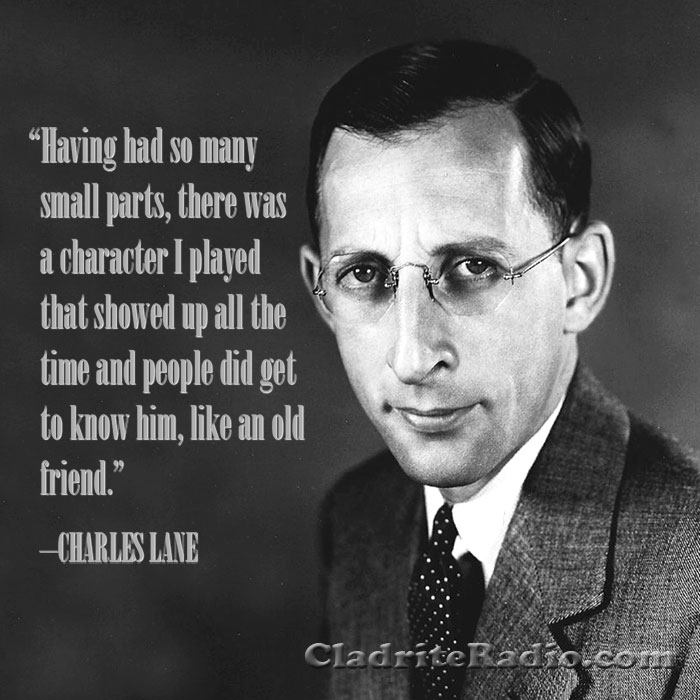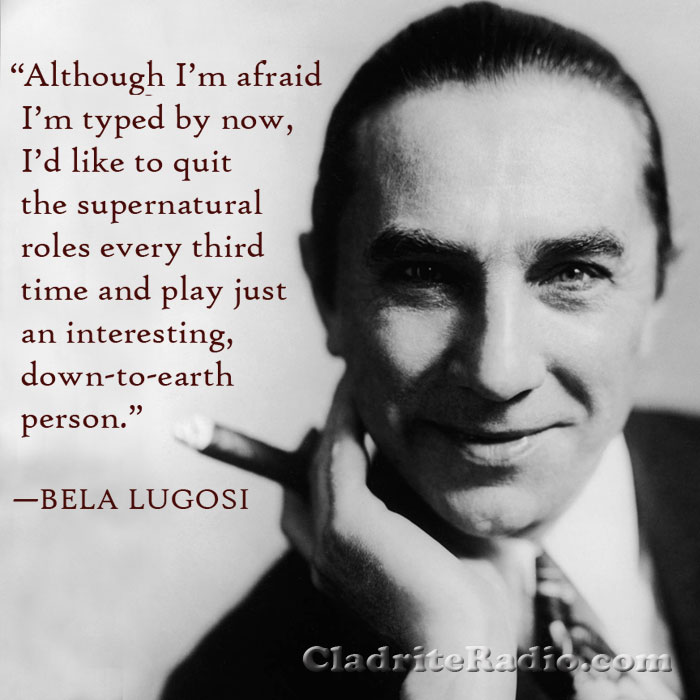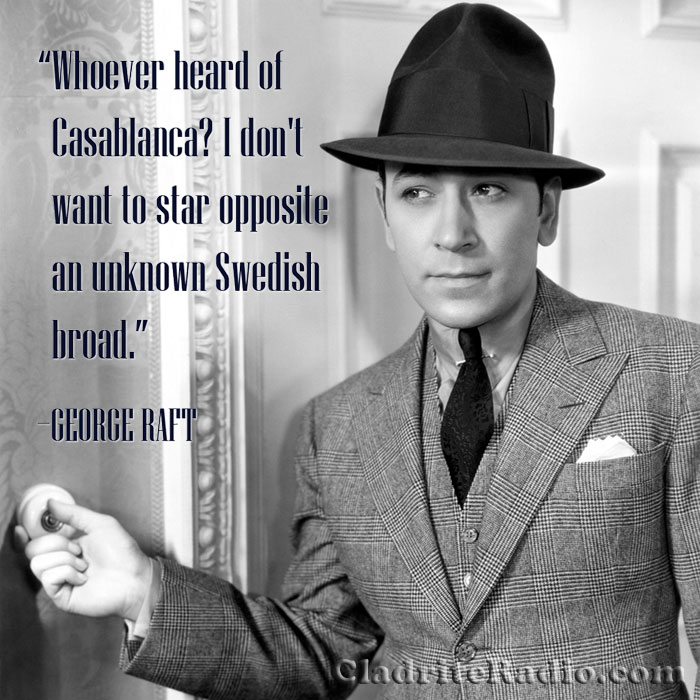Here are 10 things you should know about Alan Mowbray, born 124 years ago today. The prolific character actor appeared in more than 140 films and 40 TV series over his 39-year career.
Tag: Screen Actors Guild
10 Things You Should Know About Robert Montgomery
Here are 10 things you should know about Robert Montgomery, born 116 years ago today. He was a versatile and talented actor who went on to also produce and direct.
Happy 112th Birthday, Charles Lane!
We don’t have so many regrets, really, and certainly nothing major. But we continue to kick ourselves for not writing a fan letter to (or perhaps even trying to arrange an interview with) character actor extraordinaire Charles Lane, born Charles Gerstle Levison 112 years ago today in San Francisco, California, before he passed on in 2007.
Think of it: Here was a man who started acting in pictures in 1930 at the age of 25 and was still with us a mere decade ago. And all reports have it that he was still very sharp at age 102. Think of the stories he had to tell!
Here are 10 CL Did-You-Knows:
- Lane’s first career was in insurance sales, but director Irving Pichel recommended he take up acting and he did, working in stage productions at the famed Pasadena Playhouse.
- Lane’s movie debut was a brief appearance in Smart Money (1931) as a hotel desk clerk. His first credited role, as Charles Levinson, was as a switchboard operator in Looking for Trouble (1934). It was his 22nd movie.
- Between 1930 and 1952, Lane had appeared in more than 200 features, generally playing characters who were at the very least officious, if not downright sourpusses. This typecasting was frustrating to Lane, who continued to work in live theatre throughout his career to counteract his cinematic pigeonholing. “You did something that was pretty good, and the picture was pretty good,” he would later say. “That pedigreed you in that type of part, which I thought was stupid, and unfair, too. It didn’t give me a chance, but it made casting easier for the studio.”
- Lane’s movie appearances were generally brief but usually memorable, and he appeared in more than his share of pictures that are today considered classics, among them 42nd Street (1933), Twentieth Century (1934), Mr. Deeds Goes to Town (1936), Mr. Smith Goes to Washington (1939), I Wake Up Screaming (1941), Arsenic and Old Lace (1944) and It’s a Wonderful Life (1946), among others.
- Lane was a charter member of the Screen Actors Guild. “[The studios] work you until midnight and get you back at seven in the morning,” he said. “The actors were taking a terrible licking physically. Generally, as the case with any union, you form it because people are abused.” The Guild named January 30th, 2005, as Charles Lane Day.
- Lane was friends with Lucille Ball going back to her days as a Hollywood starlet, and when she became a huge success on television, she cast him frequently on her sitcoms.
- Lane appeared in 10 films helmed by Frank Capra, and in a letter the director once sent to Lane, Capra wrote, “I am sure that everyone has someone that he can lean on and use as a crutch whenever stories and scenes threaten to fall apart. Well, Charlie, you’ve been my No. 1 crutch.”
- Born in San Francisco in 1905, Lane was one of the last survivors of that city’s 1906 earthquake.
- Lane was a strong horseman and regretted that in all the pictures he appeared in, he never got to ride a horse. He claimed that he had, in fact, trained some of the western actors in horseback riding.
- Beginning with a 1951 appearance on The George Burns and Gracie Allen Show, Lane was as familiar a face on television as he was on the silver screen, appearing on many dozens of programs over the next four-plus decades. Lane would play a client for McMahon and Tate on Bewitched no fewer than 8 times.
Happy birthday, Charles Lane, wherever you may be!

Happy 134th Birthday, Bela Lugosi!
Bela Lugosi was born Béla Ferenc Dezső Blaskó in Lugos, Kingdom of Hungary (now Lugoj, Romania), not far from Transylvania, 134 years ago today. Here are 10 BH Did-You-Knows:
- Lugosi was the youngest of four children; his father was a banker. He dropped out of school at age 12 and began acting, playing small roles in regional theatre, just after the turn of the 20th century. He moved to Budapest in 2011 and began working (though still limited to minor roles) with the National Theatre of Hungary.
- Lugosi volunteered to serve in the Austro-Hungarian Army during World War I; he served in the infantry, rising to the rank of captain in the ski patrol. He was injured three times.
- Coming under scrutiny for his activism in creating an actor’s union in Hungary during the 1919 revolution, Lugosi fled the country, first to Vienna and later to Berlin. He soon came to the United States, landing in New Orleans in December 1920 as a member of the crew on a merchant ship.
- Lugosi appeared in 12 motion pictures in Hungary 1917 and ’18 and in several more in Germany. Once in the United States, he made his way to New York, where he became active in Hungarian theatre. He made his Broadway debut in 1922 in the play The Red Poppy. His American film debut came in 1923 in The Silent Command. He would soon make several other pictures, all filmed in and around NYC.
- In 1927, Bela Lugosi was cast as Count Dracula in the Broadway production of a play adapted from Bram Stoker‘s novel. Lugosi was a sensation in the role, but he was not the top choice for the role of the Count as the play was being developed as a movie. Director Tod Browning hoped to cast Lon Chaney, a much bigger name than Lugosi and someone Browning had worked with frequently, in the role, but Chaney’s tragic death opened the door for Lugosi to play the role he’d made famous in the legitimate theatre.
- The film was a great success, and Lugosi soon realized that the role of Count Dracula was both a blessing and a curse, as he found himself quickly—and permanently—typecast as a horror star.
- Lugosi, who had worked to establish an actor’s union in Hungary, was one of the organizers of the Screen Actor’s Guild (he was member no. 28).
- Lugosi was married five times, with only one of the marriages lasting more than three years (Lugosi and his fourth wife, Lillian Arch, remained together for just over twenty years). His third marriage, to a wealthy San Francisco widow named Beatrice Weeks, ended after just a few days when Weeks discovered he was carrying on an affair with actress Clara Bow.
- By the late 1930s, Lugosi, who suffered from sciatic neuritis, was addicted to the painkillers morphine and methadone. He would struggle with his dependency on these drugs for the rest of his life, and his career would suffer because of it.
- Though a rumor persisted of a feud between Lugosi and fellow horror star Boris Karloff, both men’s children insisted that, though the two men weren’t close, there were no hard feelings between them. The two actors appeared in seven films together: The Black Cat (1934), The Raven (1935), The Invisible Ray (1936), Son of Frankenstein (1939), You’ll Find Out (1940), Black Friday (1940) and The Body Snatcher (1945).
Happy birthday, Bela Lugosi, wherever you may be!

Happy 115th Birthday, George Raft!
Actor George Raft was born George Ranft 115 years ago today in the Hell’s Kitchen section of New York City. Raft is perhaps as well known today for the movie roles he turned down as those he accepted. Here are 10 GR Did-You-Knows:
- His parents were of German descent.
- From his youth, Raft took a great interest in dancing, and his skills as a hoofer would serve him well as he found his way as a performer. In his salad days, he made money performing (and dancing with the lady patrons) at establishments such as Maxim’s, El Fey (with Texas Guinan) and various other night spots.
- He married Grace Mulrooney, who was several years his senior, when he was 22. They separated early on, but never divorced (perhaps because Raft’s family was Catholic), and he supported her until she died in 1970.
- Raft was known to run with a pretty rough crowd. He was childhood friends with gangsters Owney Madden and Bugsy Siegel; Siegel stayed at Raft’s home in Los Angeles when the gangster first moved there.
- Raft reportedly turned down the lead roles in High Sierra (1941), The Maltese Falcon (1941), Casablanca (1942) and Double Indemnity (1944). The first three of those roles proved to be great successes for Humphrey Bogart.
- Raft appeared in Mae West‘s first (Night after Night, 1932) and last (Sextette, 1978) pictures.
- In James Cagney‘s autobiography, the actor wrote that Raft prevented Cagney from being rubbed out by the mob. Cagney was president of the Screen Actors Guild at the time, and the story goes that he was adamant the Mafia wouldn’t become active in the union’s affairs, which was not a popular stance in certain circles.
- Raft was a lifelong baseball fan, attending the World Series for 25 years in a row in the 1930s, ’40s and ’50s.
- As a teen, Raft was a bat-boy for the New York Highlanders (later the Yankees).
- In the late 1950s, Raft worked as a celebrity greeter at the Hotel Capri, a Mafia-owned casino in Havana. He was there in 1959 when rebels stormed Havana to overthrow dictator Fulgencio Batista.
Happy birthday, George Raft, wherever you may be!

